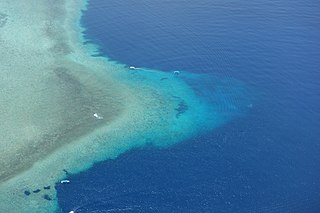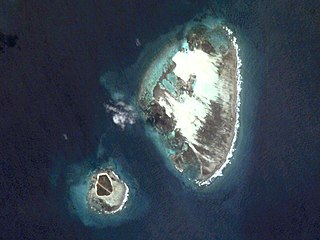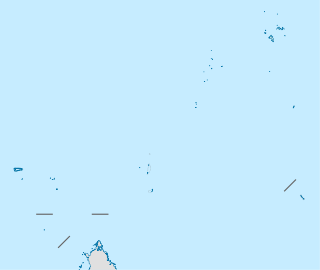 W
WA reef is a shoal of rock, sand, coral or similar material, lying beneath the surface of water. Many reefs result from natural, abiotic processes—deposition of sand, wave erosion planing down rock outcrops, etc.—but the best known reefs are the coral reefs of tropical waters developed through biotic processes dominated by corals and coralline algae.
 W
WThe Aliwal Shoal is a rocky reef which is the remains of an ancient sand dune approximately 5 kilometres (3.1 mi) off the coast of KwaZulu-Natal, South Africa. The reef is inhabited by many kinds of hard and soft corals and a variety of tropical and subtropical fish species. Aliwal Shoal was named after the near-sinking in 1849 of the three-masted vessel "Aliwal", captained by James Anderson. There are two wrecks near the reef that are popular recreational dive sites. The Norwegian bulk carrier MV Produce sank in 1974, and SS Nebo sank in 1884. Aliwal Shoal has diverse marine life, including large predators, and is popular as a recreational scuba diving destination. The Shoal is known especially for its abundance of Grey nurse sharks between July and November when the sharks congregate there to mate.
 W
WArlington Reef is one the major coral reefs of the Great Barrier Reef in the Coral Sea. The reef is located roughly 40 km north-east of Cairns. The Australian Institute of Marine Science first survey the corals of Arlington Reef in 1987 and has been subsequently monitoring them since then.
 W
WBlue Corner is a section of Palau's barrier reef in the south-east, close to Ngerukewid and German Channel. Its triangular shape, with step walls on the Pacific Ocean sides, resembles a submerged peninsula. In the north part of the Blue Corner, there is a large underwater cavern called Blue Holes. Due to a high variety of corals and wildlife in the area, the Blue Corner is a popular dive site.
 W
WThe term oyster reef refers to dense aggregations of oysters that form large colonial communities. Because oyster larvae need to settle on hard substrates, new oyster reefs may form on stone or other hard marine debris. Eventually the oyster reef will propagate by spat settling on the shells of older or nonliving oysters. The dense aggregations of oysters are often referred to as an oyster reef, oyster bed, oyster bank, oyster bottom, or oyster bar interchangeably. These terms are not well defined and often regionally restricted.
 W
WBaía da Parda is a small bay on the east coast of the island of Sal, Cape Verde. It lies about 3 km south of Pedra de Lume, and 5 km southeast of the island capital Espargos. It is known for its reefs, which are frequented by sharks.
 W
WRemire Reef is a reef in Seychelles, lying in the Outer Islands of Seychelles, with a distance of 240 km southwest of Victoria, Seychelles.
 W
WSponge reefs are reefs formed by Hexactinellid sponges, which have a skeleton made of silica, and are often referred to as glass sponges. Such reefs are now very rare, and found only on the western Canadian continental shelf. Although common in the late Jurassic period, sponge reefs were believed to have gone extinct during or shortly after the Cretaceous period, until the existing reefs were discovered in 1987–1988 - hence these sometimes being dubbed living fossils.
 W
WWizard Reef is a coral reef in the Farquhar Group in the Outer Islands of the Seychelles. It is 670 km (420 mi) southwest of the capital, Victoria, on Mahé Island.